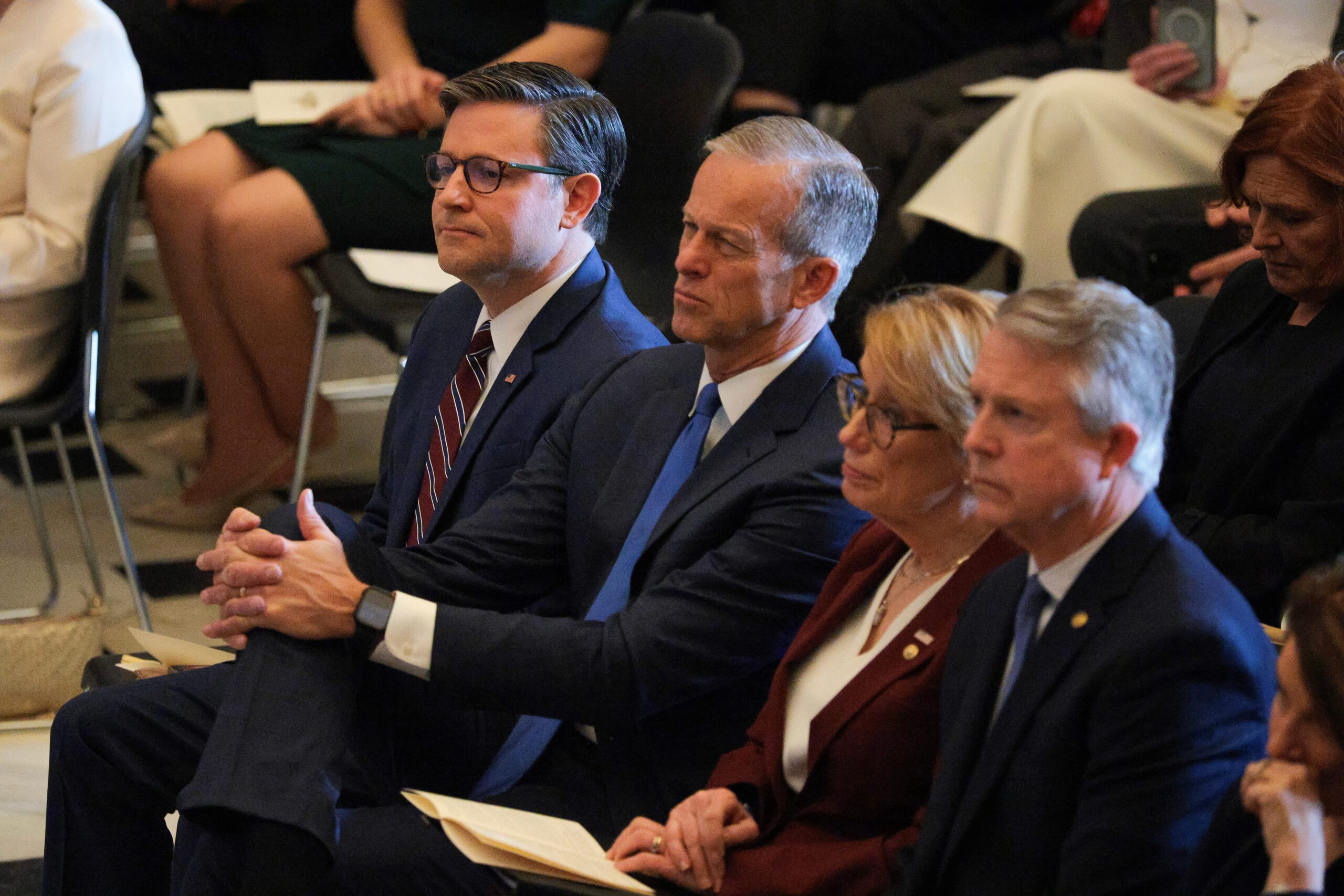
Looming Government Shutdown Threatens as Funding Deadline Approaches
With a mere two weeks remaining until the federal government’s funding expires on March 14th, Washington D.C. is bracing for a potential government shutdown. A lack of consensus between Republicans and Democrats on how to proceed has created a tense atmosphere, raising the specter of furloughed federal workers and disruptions to essential government services.
The Impasse: Continuing Resolution vs. Long-Term Extension
Lawmakers on both sides of the aisle acknowledge the near impossibility of passing full appropriations bills before the rapidly approaching deadline. As a result, the focus has shifted to securing a temporary funding extension, commonly known as a "continuing resolution" (CR), to buy more time for negotiations.
However, even on the CR front, divisions have emerged. Republican leaders have proposed a long-term extension that would maintain current funding levels through the end of September, essentially kicking the can down the road until after the summer recess. This approach aligns with President Donald Trump’s preference, as expressed in a recent Truth Social post.
In contrast, appropriations leaders from both parties favor a short-term extension, believing it would provide the necessary breathing room to finalize the outstanding appropriations bills. This strategy aims to allow for more detailed negotiations and potential compromises on specific funding priorities.
Political Minefield: Democrats’ Leverage and Presidential Authority
Complicating matters further is the political landscape. Democrats, despite being the minority party in both the House and Senate, possess significant leverage in this funding fight. Any funding bill requires 60 votes to pass the Senate, meaning at least seven Democrats must support the measure for it to succeed.
Democrats are using this leverage to demand assurances that the spending bill will be implemented as written, expressing concern over what they perceive as the Trump administration’s disregard for congressional authority. Specifically, they point to the Department of Government Efficiency (DOGE) project, led by Elon Musk, which has resulted in the slashing of federal programs previously approved by Congress.
Democrats argue that DOGE is an executive branch overreach. The Democrats argue that it is crucial to defend Congress’s "power of the purse" – its constitutional authority to control federal spending.
"We have seen this administration disregard a lot of things, absolutely," stated Senator Patty Murray, the top Democrat on the Senate Appropriations Committee. "But Congress needs to weigh in on how we want funding spent."
Republicans, however, have dismissed these demands, arguing that they will not impose constraints on the president of their own party.
"They’ve asked for what we would consider some unusual restrictions on the power of the president," explained House Appropriations Chair Representative Tom Cole. "As I remind my Democrat friends, a Republican Senate and a Republican House aren’t going to limit a Republican president, particularly a president that has to sign the bill. So that’s just a nonstarter, it’s not going to work. It’s politically impossible, whether you agree it’s right or wrong."
Speaker Johnson’s Complication and the Looming Shutdown Blame Game
The situation was further complicated this week when House Speaker Mike Johnson suggested that any funding extension could reflect the changes implemented by DOGE, effectively codifying the cuts Democrats have denounced as illegal.
"Well, it would not make sense to appropriate funds to divisions of an agency that doesn’t exist anymore. So you just have to apply reason to this," Johnson told reporters, adding that the specific components were still subject to negotiation.
This disagreement has set the stage for a high-stakes game of political "chicken," with both Republicans and Democrats already preparing to assign blame for a potential government shutdown.
Johnson has accused Democrats of "trying to push us into a funding extension" by adding "really crazy conditions" to the negotiations. "Right now, the Democrats are, it looks like, trying to set up a government shutdown," he claimed. "We can’t allow that to happen and we won’t."
Conversely, Democrats argue that Republicans, controlling both chambers of Congress and the presidency, bear the responsibility for keeping the government open.
"Democrats stand ready to support legislation that will prevent a government shutdown," wrote Senate Democratic Leader Chuck Schumer in a letter to Democratic senators. "It is incumbent on responsible Republicans to get serious and work in a bipartisan fashion to avoid a Trump Shutdown."
Potential Impacts of a Government Shutdown
A government shutdown would have far-reaching consequences, impacting various sectors of American society. During a shutdown, all "nonessential" employees and functions cease operations, with affected federal workers being furloughed without pay.
While essential benefits such as Social Security, Medicare, Medicaid payments, mail delivery, SNAP benefits, and military veterans benefits would continue, other critical services would be disrupted. National parks would close, security reviews to protect against hacking would be halted, civil litigation in courts would be suspended, and environmental and permitting reviews would be put on hold.
Air traffic controllers would continue to work, but previous shutdowns have seen problems with absenteeism, raising concerns about potential disruptions to air travel.
The longest government shutdown in U.S. history lasted 35 days, from December 2018 to January 2019, during President Trump’s first term. There were two other government shutdowns during his presidency. The experience demonstrated the far reaching impacts on the nation’s services and economy.
With the clock ticking and positions hardening, the possibility of another government shutdown looms large, threatening to disrupt essential services, impact federal workers, and further exacerbate political divisions in Washington. The coming days will be crucial in determining whether lawmakers can bridge the gap and avert a crisis.
